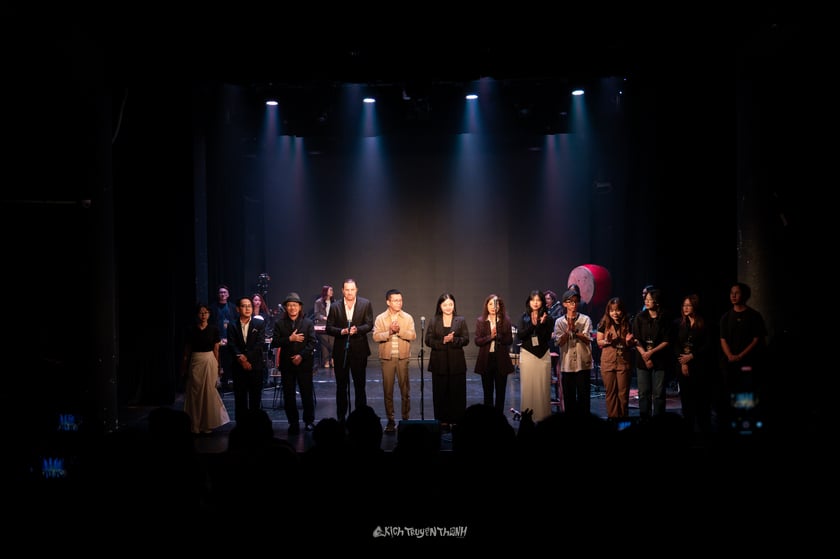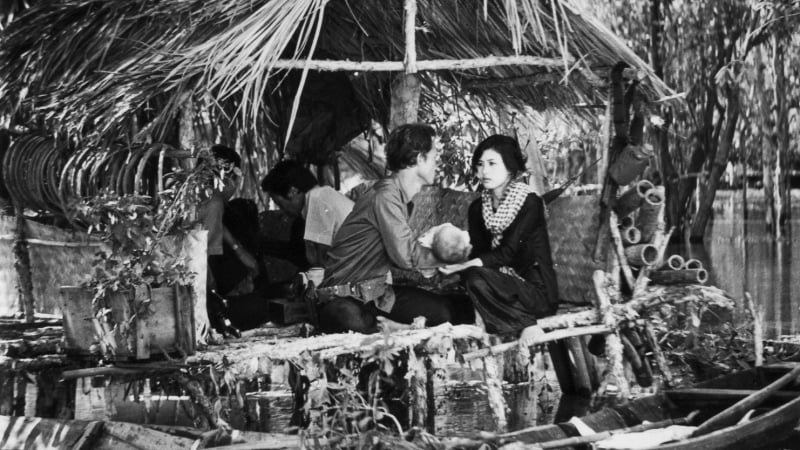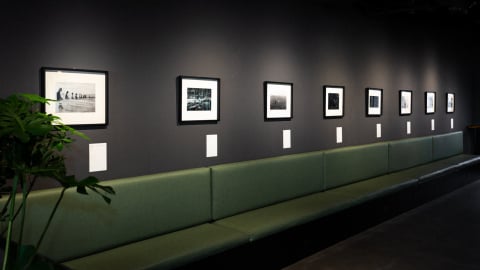Foley - The Identity of Radio Drama
Radio drama is a unique form of drama whose soul is the foley technique. This means that the story told in the play does not require any acting or improvisation between the actors, they absolutely do not need to wear makeup or memorize the script as we often see on traditional theater stages.
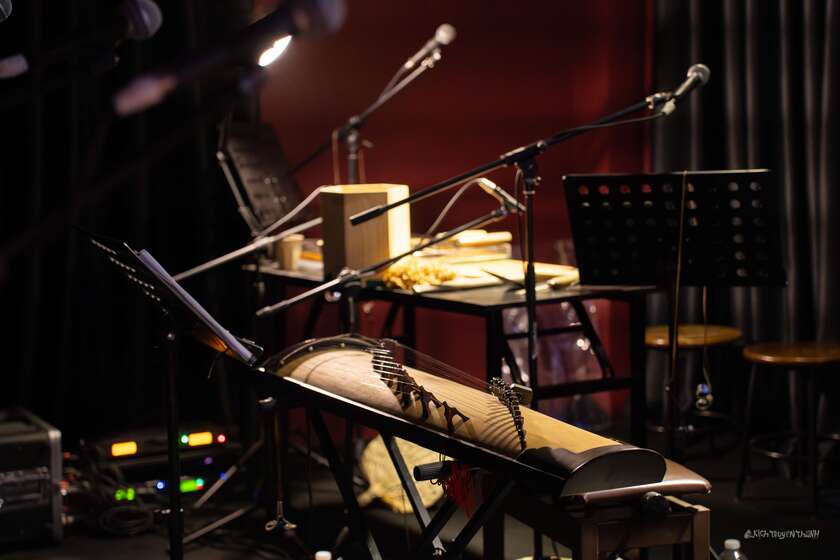
Radio drama is a unique form of drama whose core is the foley technique.
In radio drama, the actors can even pick up the script to read the lines, just like we see in the final scene of the movie Killers Of The Flower Moon. The unique and brilliant point of this art form is that the sounds are reproduced directly on stage by foley artists and other musicians without any digital intervention or post-production editing.
The audience will hear every footstep realistically, hear the sound of trickling water simulated from real water combined with familiar objects, appropriate to the situation to create effects. The objects brought onto the stage are always everyday objects such as shoes, sandals, cups, chopsticks, spoons... to create absolutely realistic sounds and evoke strong emotions for the audience. Even the sound of wind, birds or insects are reproduced directly on stage through the creativity of musical instruments combined with musicians.
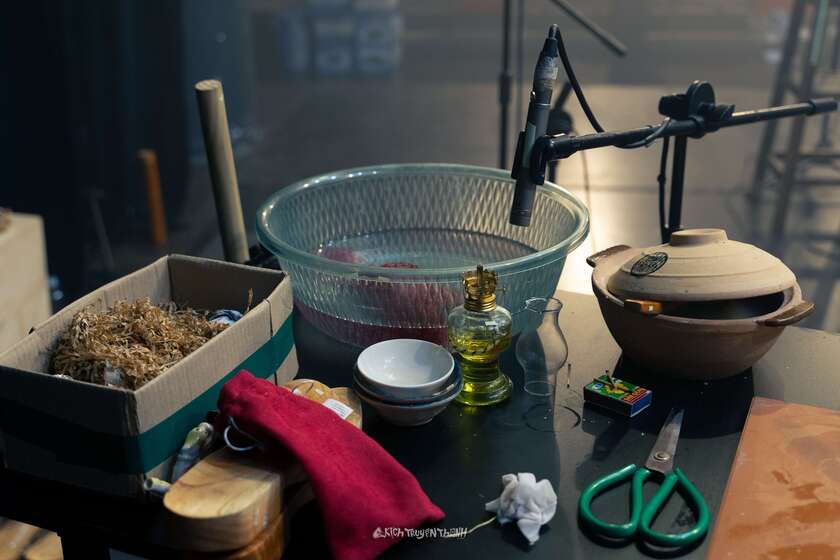
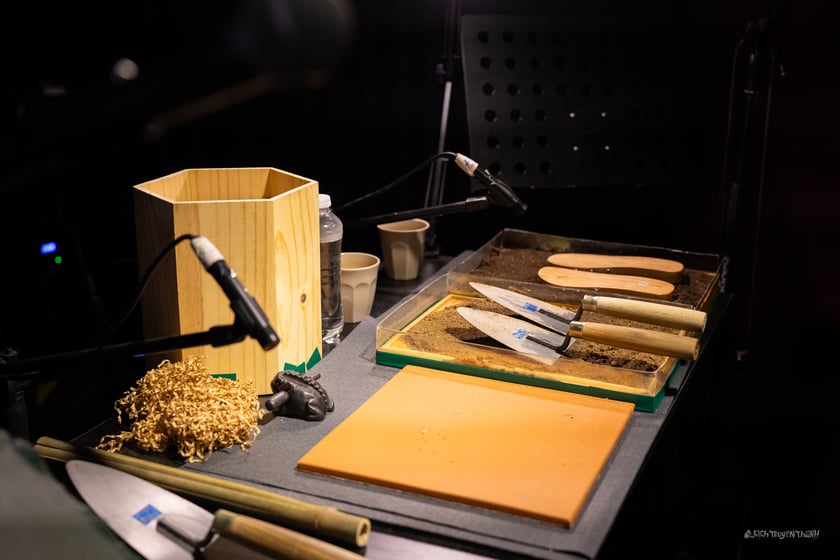
Sound is now also part of the performance. The foley artists and orchestra are not hidden behind the curtain but naturally participate under the stage lights. Together with the actors, they create a harmonious “audio-visual” interaction, together creating a work of art that touches the soul of the audience through hearing.
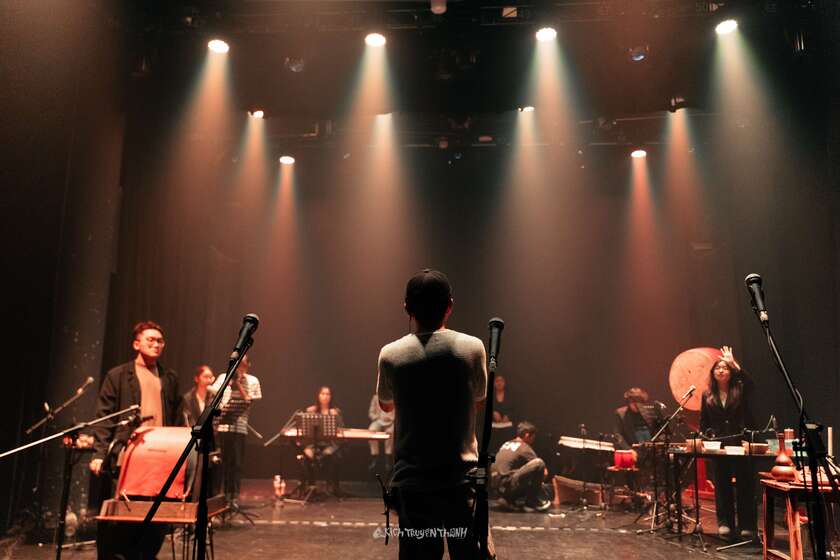

The foley artists and orchestra are not hidden behind velvet curtains but naturally participate in the spotlight.
Foley is an art form named after Jack Donovan Foley, an American sound technician who invented the method of reproducing sound on film in the 1920s; this was also the time when cinema was making a breakthrough transition from silent films to sound films.
The film in which Jack Foley applied his method to create sound effects was Show Boat, released in 1929. The technique of this method is to use everyday objects to create a series of sounds synchronized with each action of the character in the scene and these sounds will be recorded directly. Over time, to increase the quality of sound in movies, the art of foley has developed and began to be recorded, then edited and supplemented to the most perfect, contributing to enhancing the cinematic experience for the audience.
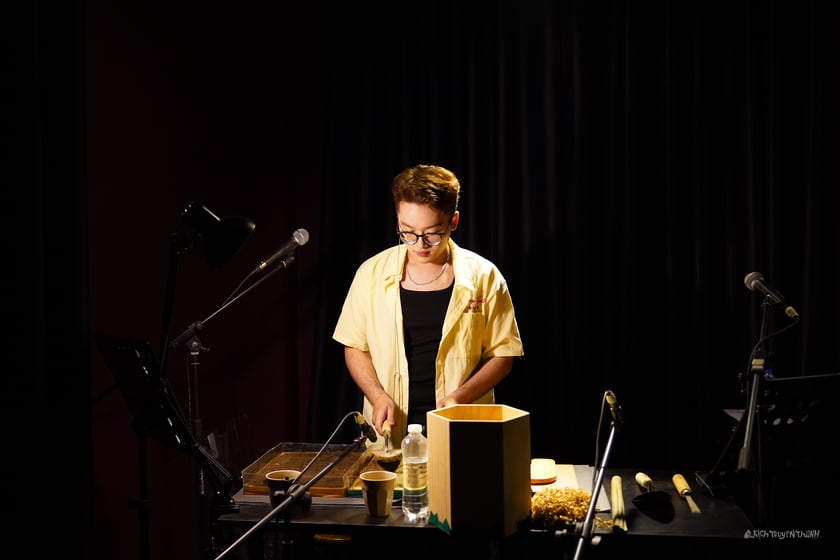
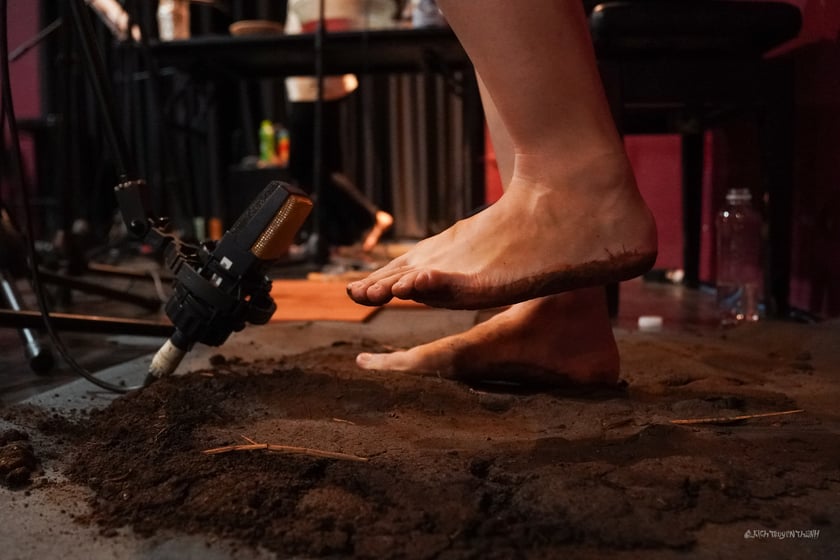
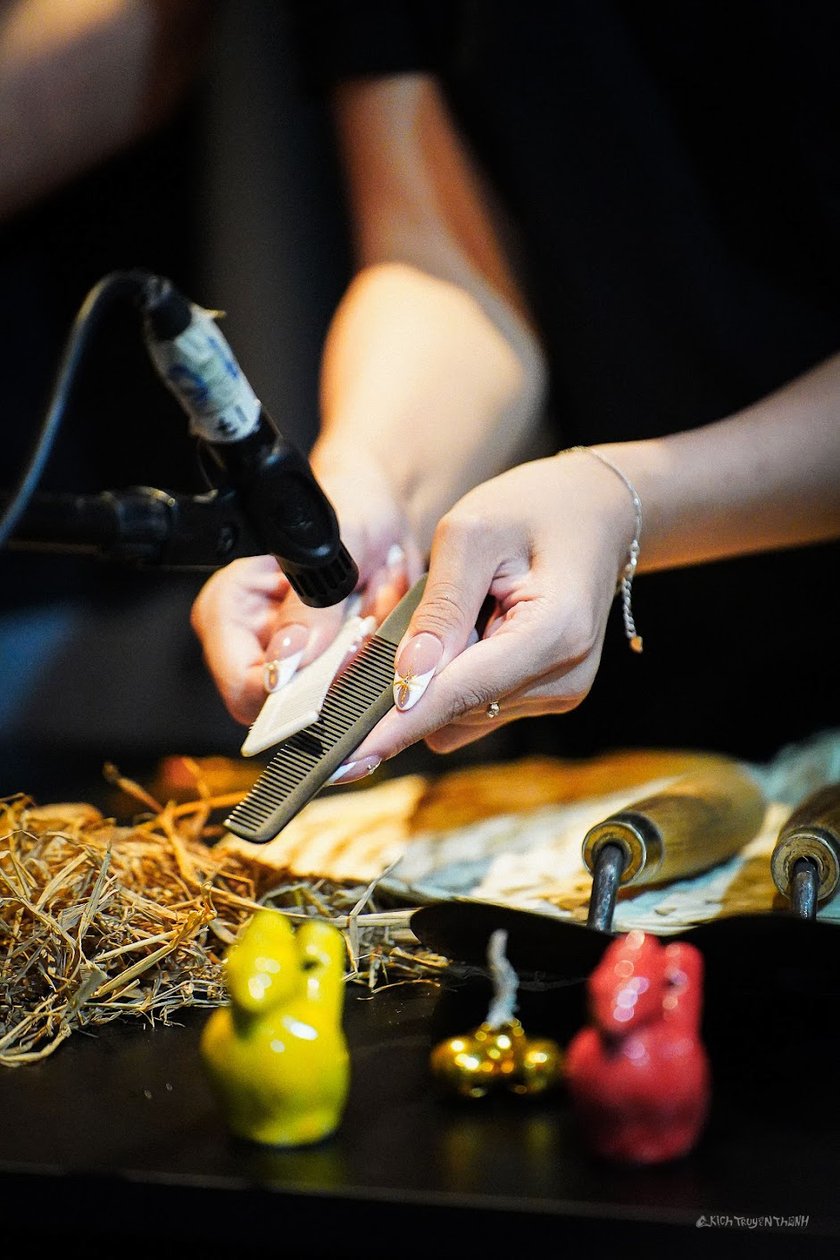
The technique of this method is to use everyday objects to create a series of sounds synchronized with each character's action in the scene and these sounds will be recorded directly.
Radio drama has also been very popular in the US since the 1940s and has been performed on stage and in studios for audiences to enjoy on the radio, but speaking of radio drama in particular, even in the US, audiences still prefer to watch it live on stage to both satisfy their hearing and discover what the foley artists will bring to this sound feast.
Until the 1960s, the emergence and outstanding development of radio and television had caused this art to gradually fade away. It was not until the era of the Internet and digital technology that this art was suddenly revived. Although the reality shows that radio drama will hardly return to its golden age, this is also a positive sign because a unique art form, bringing aesthetic pleasure from listening, has not faded in the flow of time.
Radio drama will be very different from traditional drama in that there is absolutely no acting. If there is, it is only the expressions shown during the process of the actors getting into character, in addition there will be no setting, no canvas or any acting props.
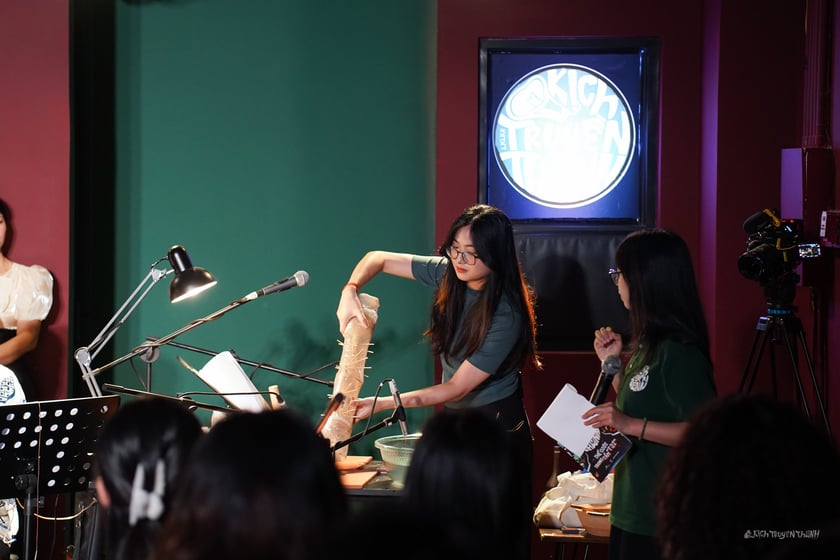
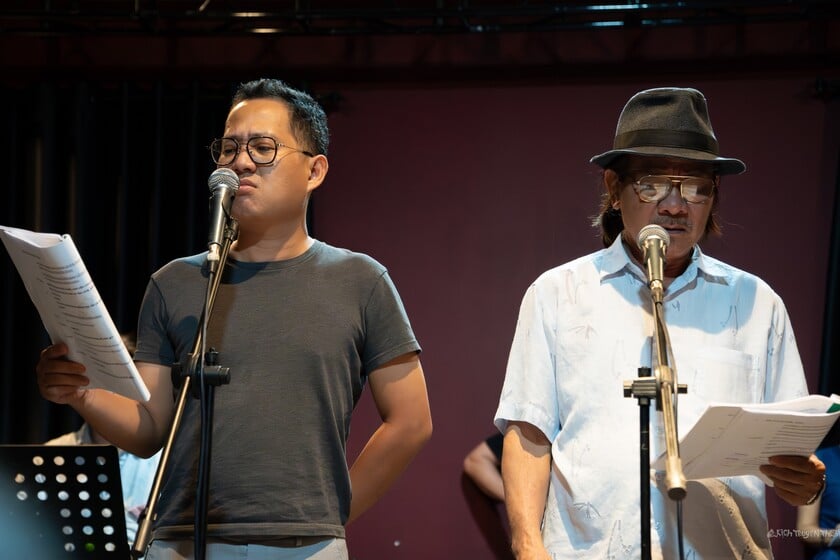

The stage is simply emotional voices to recreate the inner world and the foley artists are paying attention every second to recreate the scene. This can be both an advantage and a disadvantage of radio drama. Because of this unique form of expression, radio drama is very selective of the audience, because they will be "required/forced" to concentrate more and have to use their imagination to create images based on the sound on stage.
But the plus point is the opportunity for the image to freely fly and take shape in the hearts of the audience. At the same time, the audience will also be curious to see directly what other sounds the foley artists will be able to create, how the tones and pitches will be transformed and expressed. How a step can be transformed to distinguish whether it is a man or a woman. Or how an old man picks up food to create a sound compared to the clumsy way a child waves his chopsticks. That is both the challenge of this art form and also the point that attracts many art lovers to radio drama.
Radio Drama in Vietnam - A Revival Beginning
In Vietnam, this art form is gradually gaining attention and love from the audience, especially the young people. Last March, the premiere of the radio play Chi Pheo by director Vu Phuc An was successful and packed with more than 300 spectators in Ho Chi Minh City. The premiere was also an event within the framework of the graduation project with the topic "Promoting the art form of radio drama to young people in Ho Chi Minh City" by FPT University students; members of the LKLK team (Loc Koc Leng Keng) with the desire to bring radio drama closer to the public, especially the young people.
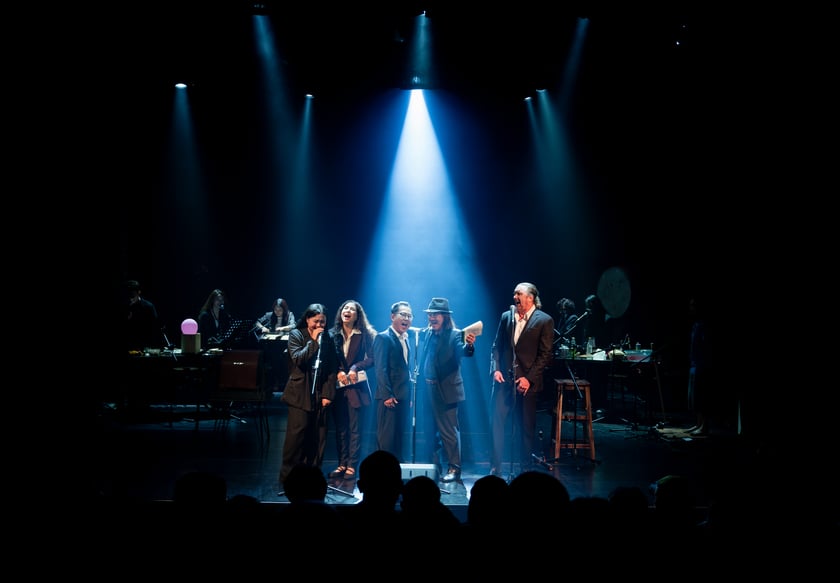
The radio play Chi Pheo by director Vu Phuc An took place in Ho Chi Minh City last March.

Members of the LKLK (Loc Koc Leng Keng) team
The play, with the participation of artists Aaron Toronto (Director of the film The Glorious Night), surprised the audience with his Vietnamese-styled portrayal of Chi Pheo. In addition, there were Meritorious Artists Pham Huy Thuc, Nguyen Hong Van, Cam Linh, Nguyen Quoc Viet, etc. Meritorious Artist Dinh Linh performed music with traditional instruments such as flutes, flutes, and percussion, bringing a colorful and emotional musical feast.

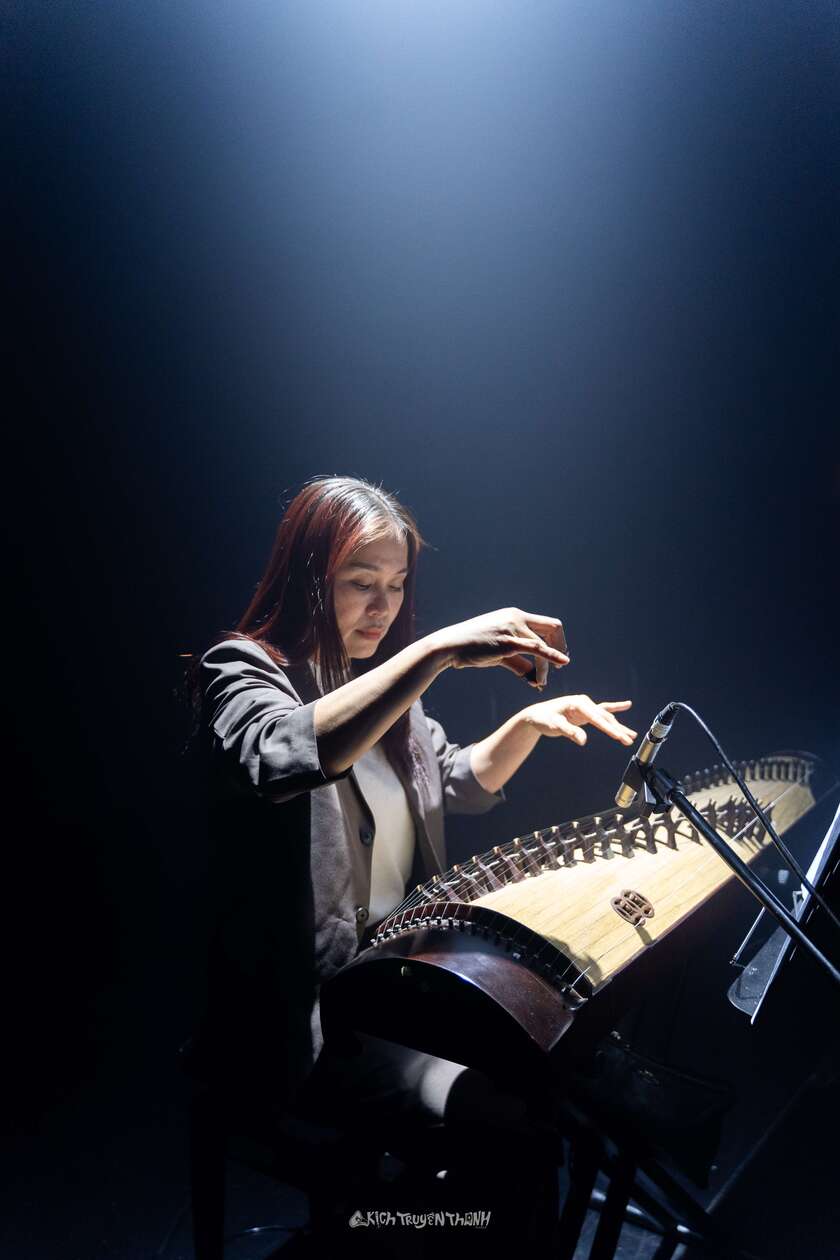
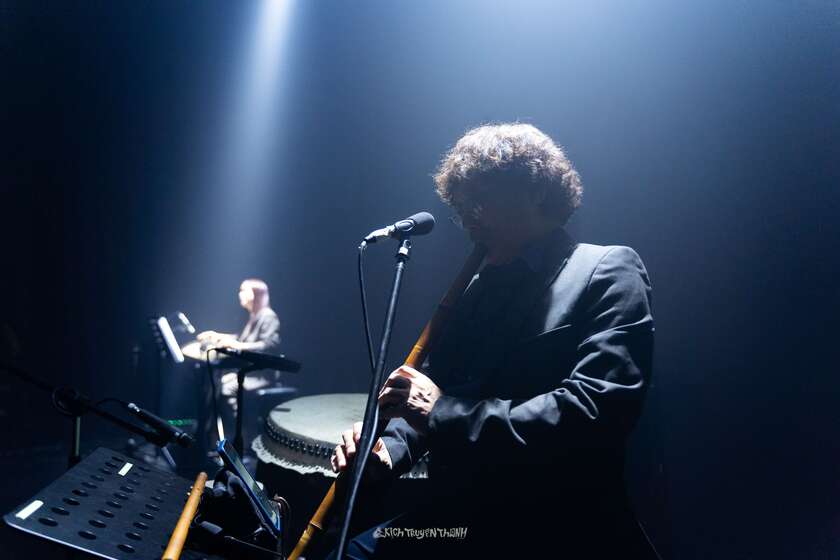
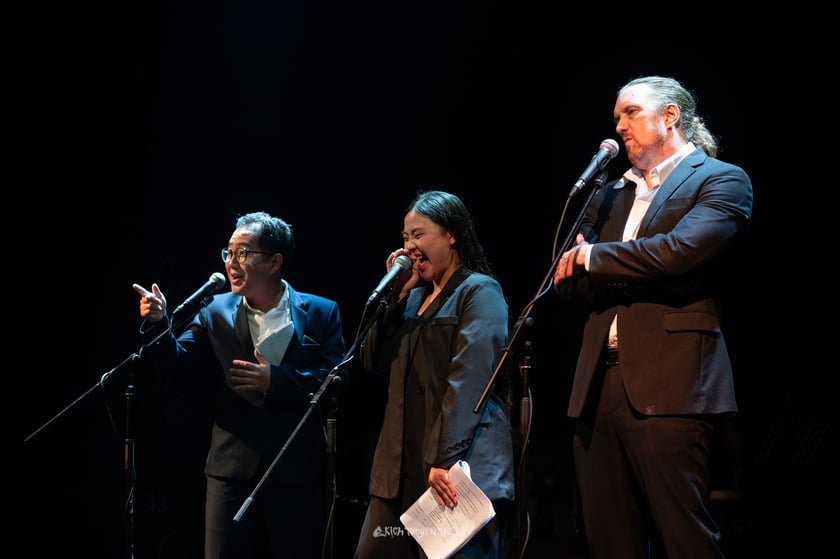
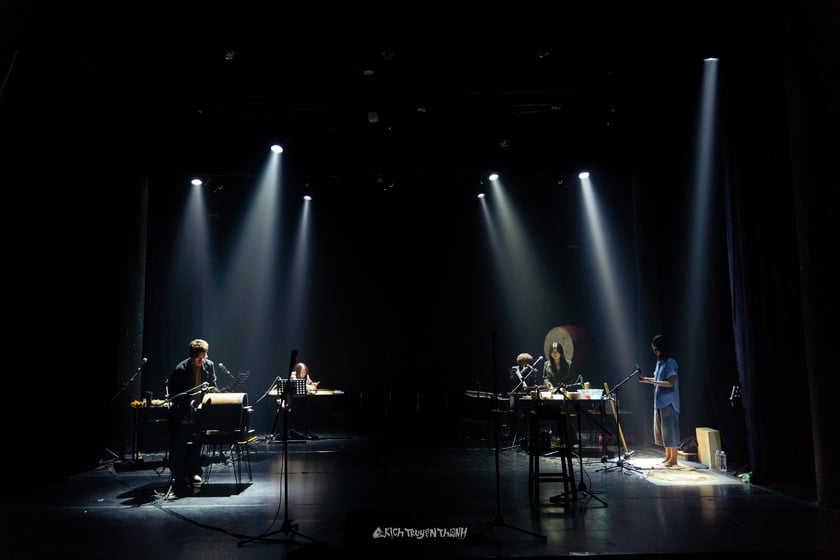
Pham Thao Ly (show manager) said that the idea of radio drama came entirely from director Vu Phuc An. Because according to the director, sound plays an extremely important role in all forms of art and entertainment. Obviously, sound adds many details to a story, it helps express the state and emotions of the characters, thereby directly affecting the audience's feelings.
“When talking about entertainment media, we often use the term 'audio-visual', but in fact, the 'visual' element is always more emphasized and valued than 'hearing'. Realizing that the meaning of sound is often forgotten, director Vu Phuc An set out to realize the idea of reviving radio drama - focusing only on exploiting sound and performing it live on stage”, Pham Thao Ly shared.

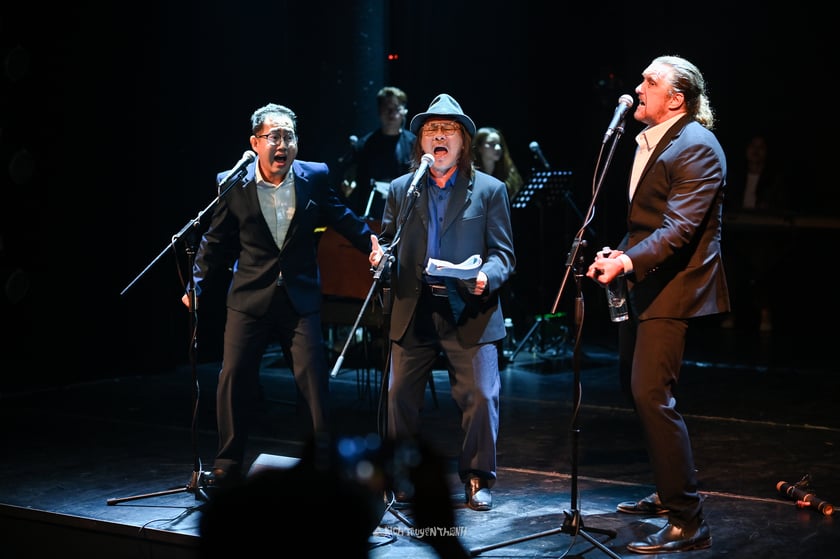
Realizing the often forgotten significance of sound, director Vu Phuc An set out to realize the idea of reviving radio drama - focusing only on exploiting sound and performing it live on stage.
The premiere of Chí Phèo is just the starting point in the journey of the entire LKLK crew to build a community that loves and accepts the radio drama genre. In the future, other familiar classic Vietnamese literary works will continue to be performed and performed with sound on the radio drama stage, contributing to creating a unique spiritual joy for the audience and reviving an art form that was thought to have sunk into oblivion.
In Vietnamese, we have a very beautiful phrase “nghê thay”. Why are “nghê-thị” (hearing and seeing) placed together? Isn’t it the sound that contributes to creating the vision, drawing in our soul so many beautiful scenes and overflowing emotions? If sound were not so important, Ngo Thuy Mien would not have been able to write “Autumn for you”, that:
Do you hear the autumn rain and falling leaves?
Do you hear the deer sing a love song?
And do you hear when autumn comes
Bring love and affection
Can you hear, hear the autumn soul say we love each other?
And imagine what the foley artists would have to do on the radio stage to create."Autumn rain, falling leaves"so that we can"listen to the autumn soul say we love each other". The aesthetic we get from radio drama is the aesthetic that comes from sound and the story from that sound gradually draws each line in the unique imagination of each of us. A world is opened, a form of entering the artistic space and an opportunity for us to focus and enjoy.
